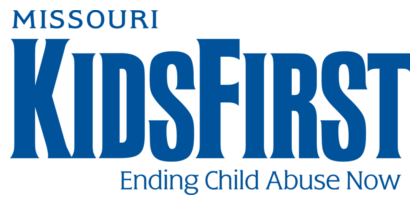Statistics
Learning the facts is the first step to preventing and addressing child abuse and neglect in our communities. The statistics and facts below will help you understand the prevalence of child abuse and neglect and the impact that child abuse and neglect has on children, families and communities.
Child abuse and neglect is highly prevalent nationally and in Missouri.
- At least 1 in 7 children have experienced child abuse and/or neglect in the last year. ( 1 )
- Child sexual abuse is likely the most prevalent health problem children face with the most serious array of consequences. About one in 10 children will be sexually abused before they turn 18, including one in seven girls and one in 25 boys.( 2 )
- In Missouri, there were 5,465 substantiated cases of child abuse and/or neglect in 2018. Approximately 30% were cases of physical abuse and 25% were cases of sexual abuse.( 3 )
- Missouri Child Advocacy Centers served over 9,100 children in 2019. Over 6,000 children reported sexual abuse and 2,400 reported physical abuse.( 4 )
Child abuse is often not disclosed.
- Only 38% of child victims disclose the fact that they have been sexually abused and some never disclose in their lifetime.( 5 ),( 6 ),( 7 )
- About 90% of children who are victims of sexual abuse know their abuser.( 8 )
- 30% of children who are sexually abused are abused by family members and the younger the victim, the more likely it is that the abuser is a family member.
- About 60% of children who are sexually abused are abused by people the family trusts (e.g. coaches, teachers, clergy).
The impact of child abuse and neglect is substantial.
- In the short-term, children who are abused and neglected may suffer immediate physical injuries as well as emotional and psychological problems. Child abuse and neglect can also affect long-term health outcomes, mental health, social development, and risk-taking behavior into adolescence and adulthood:
- Childhood violence increases the risks of injury, sexually transmitted infections, including HIV, mental health problems, delayed cognitive development, reproductive health problems, involvement in sex trafficking, and noncommunicable diseases.
- Given the high prevalence of child abuse and neglect and its vast consequences, the associated economic impact is substantial. In the United States, the total lifetime economic burden associated with child abuse and neglect was approximately $124 billion in 2008. ( 9 ),( 10 ),( 11 )
- Child sexual abuse has been linked to higher levels of risk behaviors
- Academic problems are a common symptom of child abuse. Sexually abused children tended to perform lower on tests, have higher absentee rates and are more likely to drop out of school.( 12 )
- Children with a history of child sexual abuse demonstrate an increase in rates of substance abuse/dependence and delinquency and crime.( 13 )
RESOURCES
- Preventing Child Abuse and Neglect: A Technical Package for Policy, Norm, and Programmatic Activities, Centers for Disease Control and Prevention
- Child Sexual Abuse Statistics, Darkness to Light
- Missouri KidsCount
1 Finkelhor, D., Turner, H. A., Shattuck, A., & Hamby, S. L. (2015). Prevalence of childhood exposure to violence, crime, and abuse: Results from the National Survey of Children’s Exposure to Violence. JAMA Pediatrics, 169(8), 746-754.
2 Townsend, C., & Rheingold, A.A., (2013). Estimating a child sexual abuse prevalence rate for practitioners: studies. Charleston, S.C., Darkness to Light.
3 Missouri KidsCount (with data from the Missouri Department of Social Services)
4 2019 Missouri Statistical Report. National Children’s Alliance
5 London, K., Bruck, M., Ceci, S., & Shuman, D. (2003) Disclosure of child sexual abuse: What does the research tell us about the ways that children tell? Psychology, Public Policy, and Law, 11(1), 194-226
6 Ullman, S. E. (2007). Relationship to perpetrator, disclosure, social reactions, and PTSD symptoms in child sexual abuse survivors. Journal of Child Sexual Abuse, 16(1), 19-36
7 Broman-Fulks, J. J., Ruggiero, K. J., Hanson, R. F., Smith, D. W., Resnick, H. S., Kilpatrick, D. G., & Saunders, B. E. (2007). Sexual assault disclosure in relation to adolescent mental health: Results from the National Survey of Adolescents. Journal of Clinical Child and Adolescent Psychology, 36, 260 – 266.
8 Finkelhor, D. (2012). Characteristics of crimes against juveniles. Durham, NH: Crimes against Children Research Center.
9 Leeb, R. T., Lewis, T., & Zolotor, A. J. (2011). A review of the physical and mental health consequences of child abuse and neglect and implications for practice. American Journal of Lifestyle Medicine, 5(5), 454-468.
10 Gilbert, L. K., Breiding, M. J., Merrick, M. T., Thompson, W. W., Ford, D. C., Dhingra, S. S., & Parks, S. E. (2015). Childhood adversity and adult chronic disease. An update from ten states and the District of Columbia. American Journal of Preventive Medicine, 48(3), 345-349.
11 Fang, X., Brown, D. S., Florence, C. S., & Mercy, J. A. (2012). The economic burden of child maltreatment in the United States and implications for prevention. Child Abuse & Neglect, 36, 156-165.
12 The Issue of Child Abuse: Child Abuse Statistics, Darkness to Light.
13 The Issue of Child Abuse: Child Abuse Statistics, Darkness to Light.
